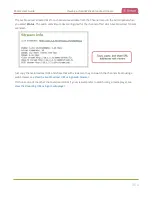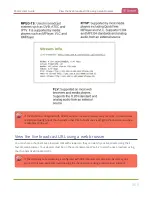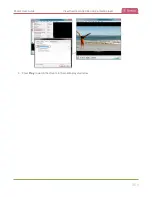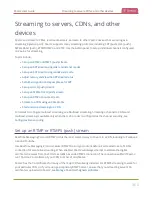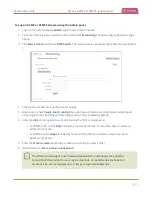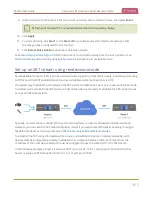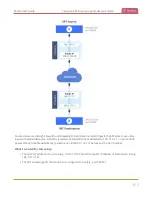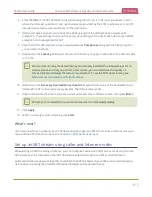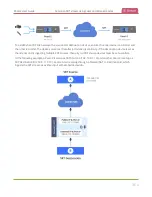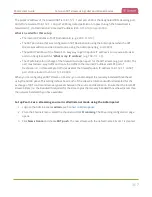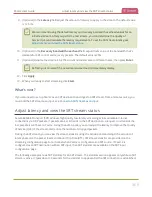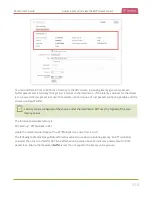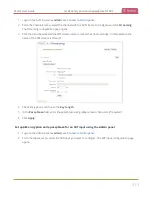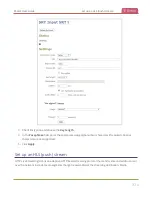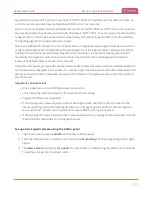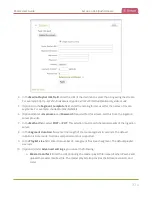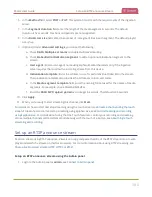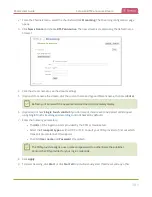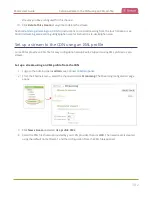
Pearl-2 User Guide
Set up an SRT stream using caller and listener modes
The public IP address of the Firewall/NAT is 168.112.1.1 and port 2000 is the designated SRT streaming port.
All traffic received at 168.112.1.1 on port 2000 is granted permission to pass through the firewall and is
forwarded ( C ) to Destination B's internal IP address (203.0.113.10) on port 3000.
What's needed for this setup
l
The internal IP address of SRT Destination B (e.g. 203.0.113.10).
l
The SRT port value that was configured on SRT Destination B using the Admin panel when the SRT
stream was added as a video input source using the Admin panel (e.g. port 3000).
l
The public IP address of the firewall. An easy way to get the public IP address is to use a web browser
and do a Google search for "
What is my IP address
" (e.g. 168.112.1.1).
l
The IT administrator in charge of the firewall must open a port for the SRT stream (e.g. port 2000). The
port must allow 2-way traffic and route the traffic to the internal IP address and SRT port of
Destination B. In this example, traffic received at the firewall's public IP address 168.112.1.1 on SRT
port 2000 is routed to 203.0.113.10:3000.
When you're configuring an SRT stream on Pearl-2, you can also adjust the recovery bandwidth overhead
using the Admin panel. This setting defines how much of the stream's total bandwidth is dedicated for the
exchange of SRT control and recovery packets between the source and destination. Ensure that the total SRT
stream bitrate (i.e. the bandwidth required for the stream plus the recovery bandwidth overhead) is less than
the network bandwidth you have available.
Set up Pearl-2 as a streaming source in caller/listener mode using the Admin panel
1. Login to the Admin panel as
admin
.
2. From the Channels menu, select the channel and click
Streaming
. The Streaming configuration page
opens.
3. Click
New stream
and choose
SRT push
. The new stream with the default name
Stream 1
is created.
367


